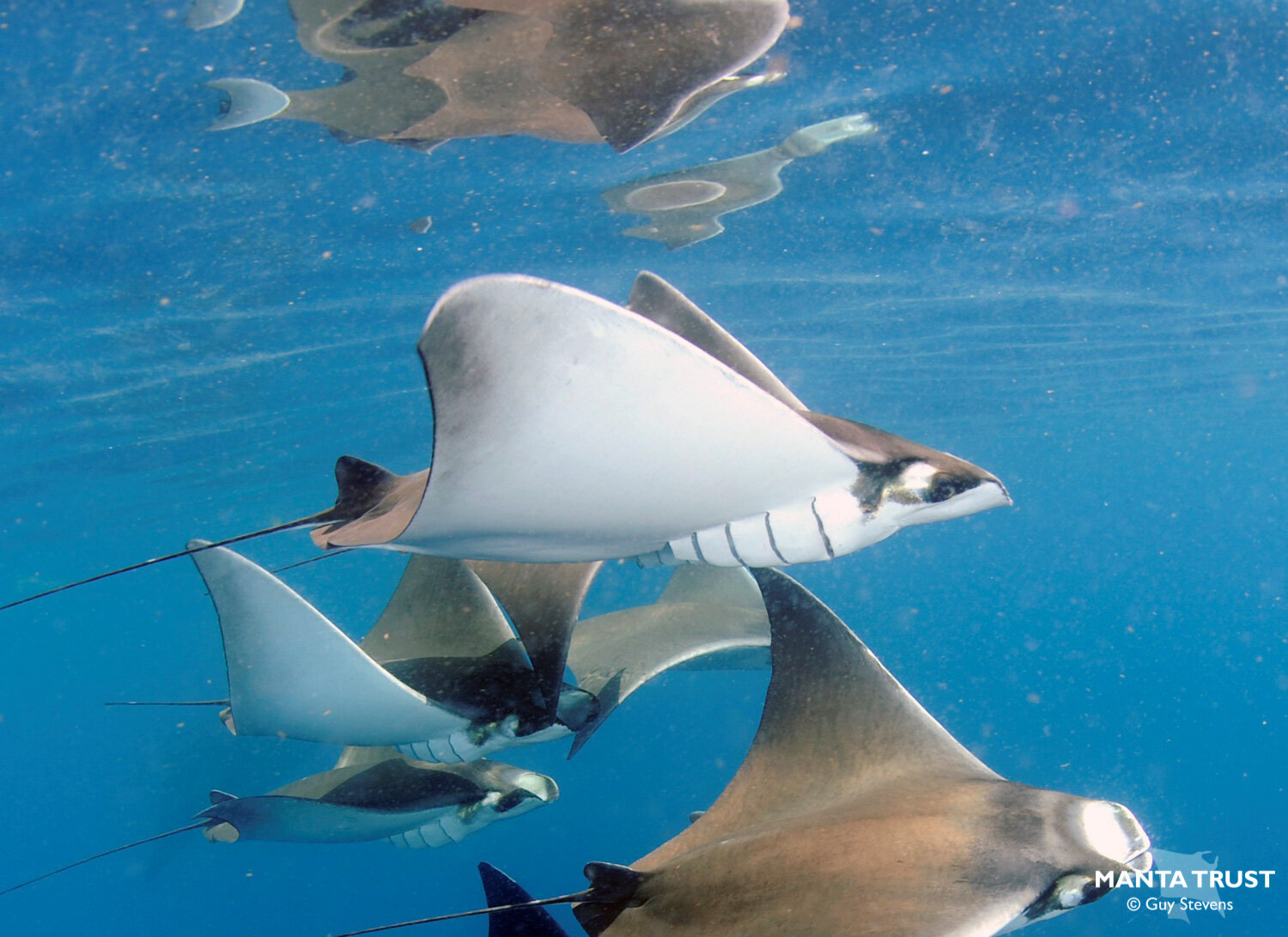
OVERVIEW
IUCN Red List classification.
Atlantic pygmy devil rays (Mobula hypostoma), formerly known as the West Atlantic pygmy ray, were initially thought to inhabit only the tropical and warm temperate waters of the Western Atlantic coasts and islands. Meanwhile, the East Atlantic pygmy devil ray (Mobula rochebrunei) was thought to be a distinct species due to limited data. However, recent genomic and morphometric analysis of three pygmy devil rays discovered in Cameroon confirmed that both are the same species: the Atlantic pygmy devil ray (Mobula hypostoma). They are most commonly observed in groups of 2-10 individuals, with groups as large as 40 being recorded.
The Atlantic pygmy devil rays are nowhere directly targeted by fisheries because of their insignificant commercial value, however some level of mortality to the species derives from bycatch in longline and net fisheries. Unfortunately, this species is likely caught as bycatch in many small-scale fisheries and is now notably absent from many regions of its former geographical range. With a suspected population decline of 50-79% across three generations, this species if now defined as Endangered on the IUCN’s Red List of threatened species.
DISC WIDTH
Average: 110cm
Max: 134cm
WEIGHT
Max: ~24kg
LIFESPAN
Unknown
KEY FEATURES
Dorsal surface colouration is variable, from a light brown to grey or black.
Some individuals possess dark grey ‘collar’, not always connected in the middle, from side to side above spiracles.
Dorsal fin with dark rim along margins, often with a lighter grey area in the middle.
Tail shorter than disc width.
Spiracle very small, subcircular and below margin where pectoral fin meets the body.

GALLERY

LATEST RESEARCH
To see publications on manta and devil rays from the Manta Trust and our affiliate projects please click here:
WANT TO LEARN ABOUT OTHER MOBULID SPECIES?
















